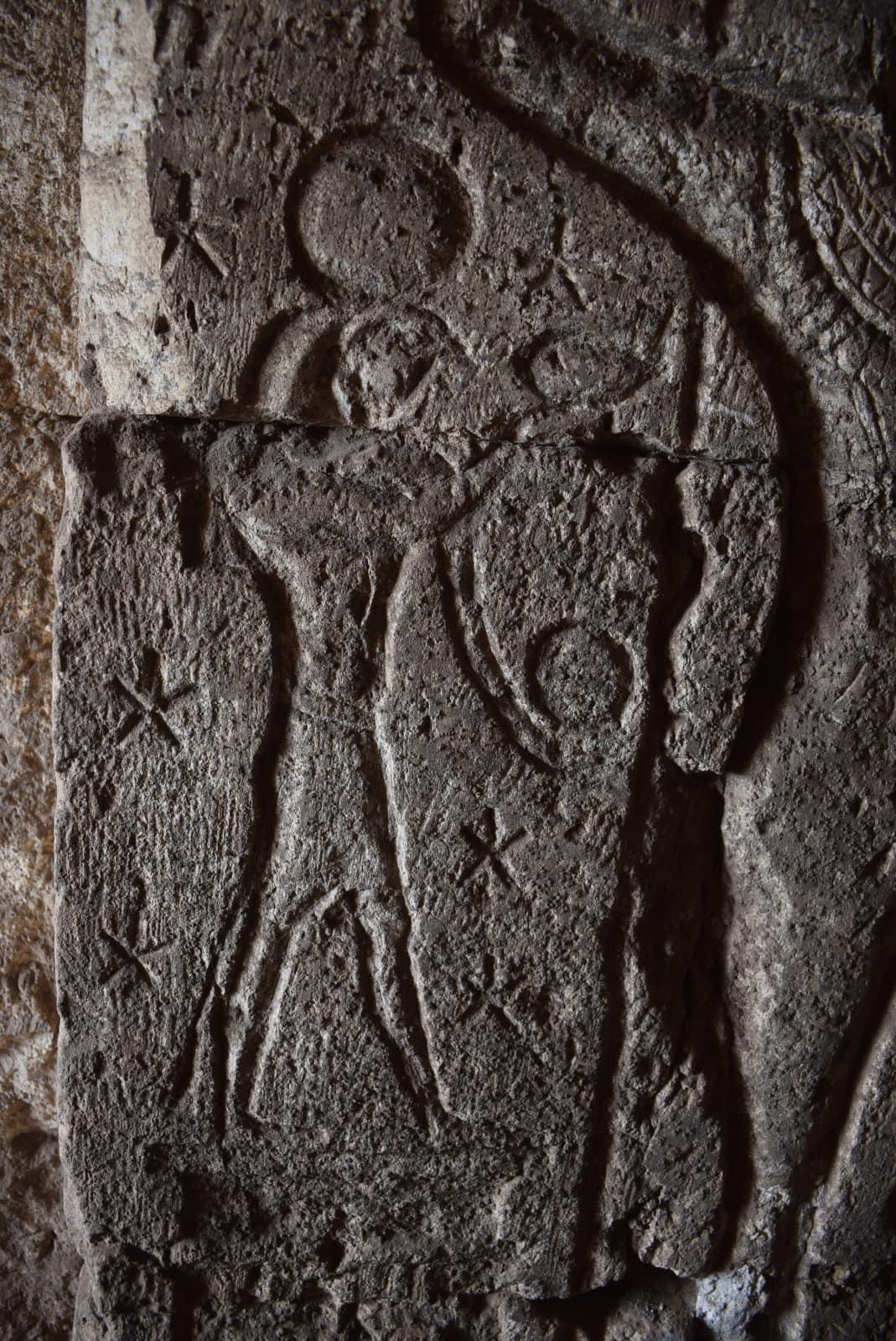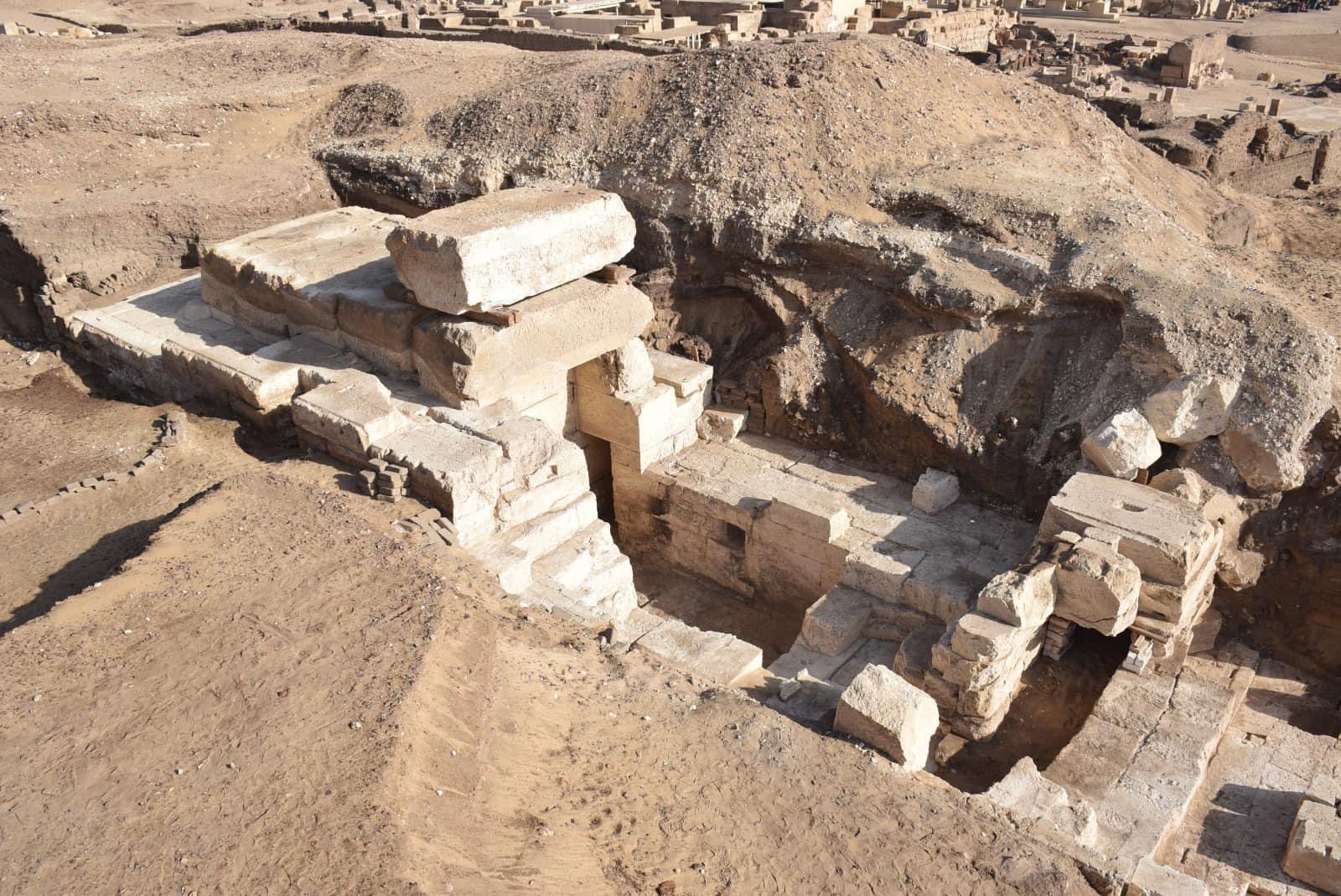A joint Egyptian-German archaeological mission has discovered a Ptolemaic temple structure in the western area of the Great Temple of Atripes in Sohag Governorate on Saturday 23 November.
This mission was lead by the Supreme Council of Antiquities and the German University of Tübingen.

The newly unveiled part of the temple spans 51 meters wide and is divided into two towers, each measuring 24 meters.
The entrance gate separates these towers, and the original height of the structure is believed to have been around 18 meters, similar to the Luxor Temple.
Mohamed Abd El-Badiah, head of the Egyptian side of the mission, noted that while cleaning the main gate, hieroglyphic texts and reliefs were found.
These artworks depict the king greeting the lion-headed goddess “Rabit” and her son, the child deity “Koulentis.”
Dr. Mohamed Ismail Khaled, Secretary General of the Supreme Council of Antiquities, stated that the mission will continue to explore the site to uncover more parts of the temple in future excavations.
He also confirmed that the Supreme Council will fully support these efforts, following the directives of Minister of Tourism and Antiquities, Sherif Fathy.
Research by the Egyptian-German mission on the discovered cartouches indicates that this gate dates back to the reign of King Ptolemy VIII, who may have founded the temple. There is also a possibility that the name of his wife, Queen Cleopatra III, is among the inscriptions.
The German side of the mission, led by Dr. Christian Leitz, reported that the southern chamber of the temple has been fully excavated.
The work of this mission will continue to shed light on Egypt’s history and the cultural significance of the Ptolemaic period.







Comments (0)